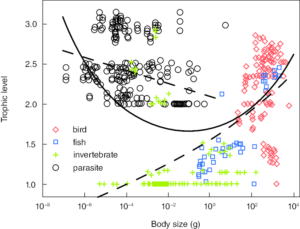Back to: ZOOLOGY 200 Level
Welcome back to another exciting step in our Zoology journey. Today, we’re going to look at the differences between Free-living and Parasitic Species. You’ll discover how lifestyle shapes biology and behaviour—and how different organisms have adapted in fascinating ways to survive in their chosen environments. Let’s get into it!
Free-living vs. parasitic species
Understanding free-living species
Free-living species are organisms that live independently, without relying on a host for survival. They find their own food, defend themselves from predators, and often move around freely in their environment. These organisms can be herbivores, carnivores, or decomposers, and they are usually a part of balanced ecosystems.

A good example is the planarian, a type of flatworm found in freshwater. It feeds on smaller organisms or decaying material and uses a muscular pharynx to suck in food. Free-living species usually have well-developed sense organs, a digestive system, and a locomotion mechanism like cilia, flagella, or muscles to help them move in search of food or to escape danger.
Understanding parasitic species
Parasitic species, on the other hand, live in or on another organism (called the host), from which they obtain nutrients. They are often highly specialised for this lifestyle, with structural and behavioural adaptations that make them efficient at surviving in a host. However, they usually harm the host in the process, although they rarely kill the host outright—since their survival depends on it.
Examples include Fasciola (the liver fluke) and Taenia (the tapeworm). These parasites have features such as hooks, suckers, protective coverings, and a reproductive system capable of producing thousands of eggs, all designed for effective survival inside a host.
Key differences between free-living and parasitic species
- Nutrition: Free-living species hunt or gather food from the environment, while parasitic species absorb nutrients from the host.
- Mobility: Free-living species tend to be mobile and explore their environment. Parasitic species are often sessile once inside the host.
- Structure: Free-living forms have more complex sensory organs and digestive systems. Parasites may have reduced or absent sensory or digestive systems, as they are unnecessary in the host environment.
- Reproduction: Parasites produce more offspring, increasing the chance of finding a new host. Free-living species may have fewer offspring but invest more in care or development.

Why this matters
Understanding these differences helps us appreciate how organisms evolve based on their lifestyle. It also helps in controlling diseases caused by parasites, as knowing how they live and reproduce makes it easier to disrupt their life cycles and protect human and animal health.
Summary
Free-living species are independent organisms that find their own food and move freely. Parasitic species depend on a host, often with special adaptations like suckers and hooks. While free-living species are more structurally complex in some ways, parasites are masters of reproduction and survival within a host. Their differences are shaped by the demands of their environment and lifestyle.
Evaluation
- What is the main difference between a free-living and a parasitic species?
- Mention two examples each of free-living and parasitic species.
- Describe one structural adaptation of a parasitic organism.
- Why do parasitic species produce a large number of eggs?
You’re building a strong foundation in Zoology that will serve you for life. Keep going, stay curious, and remember that Afrilearn is here to make your learning journey fun, easy, and meaningful. Ready for the next big idea?
